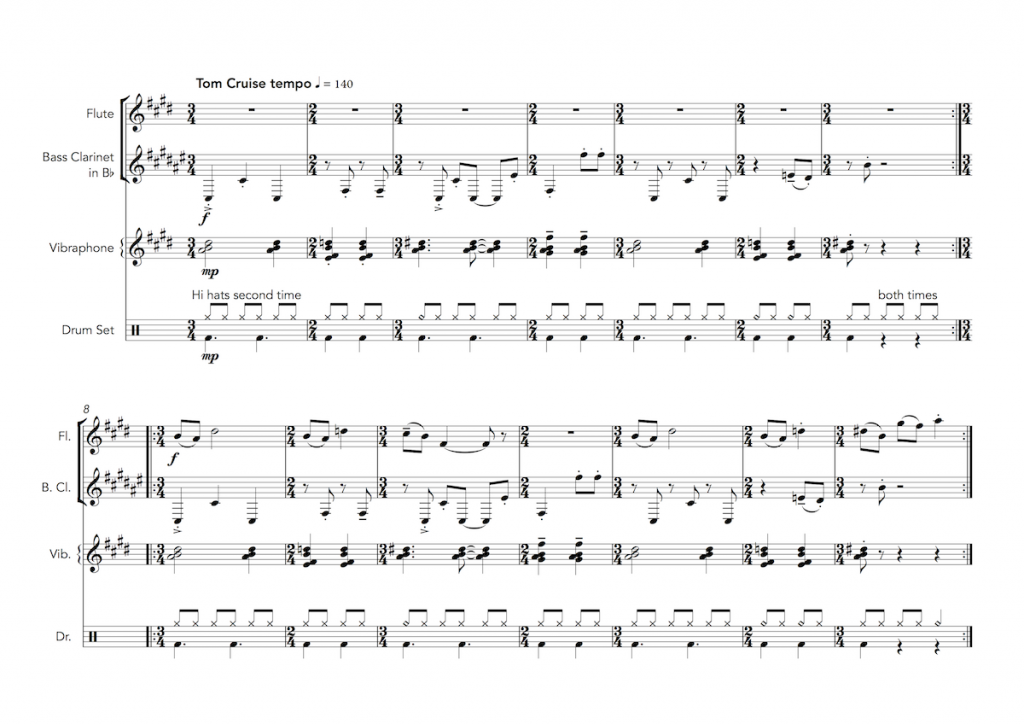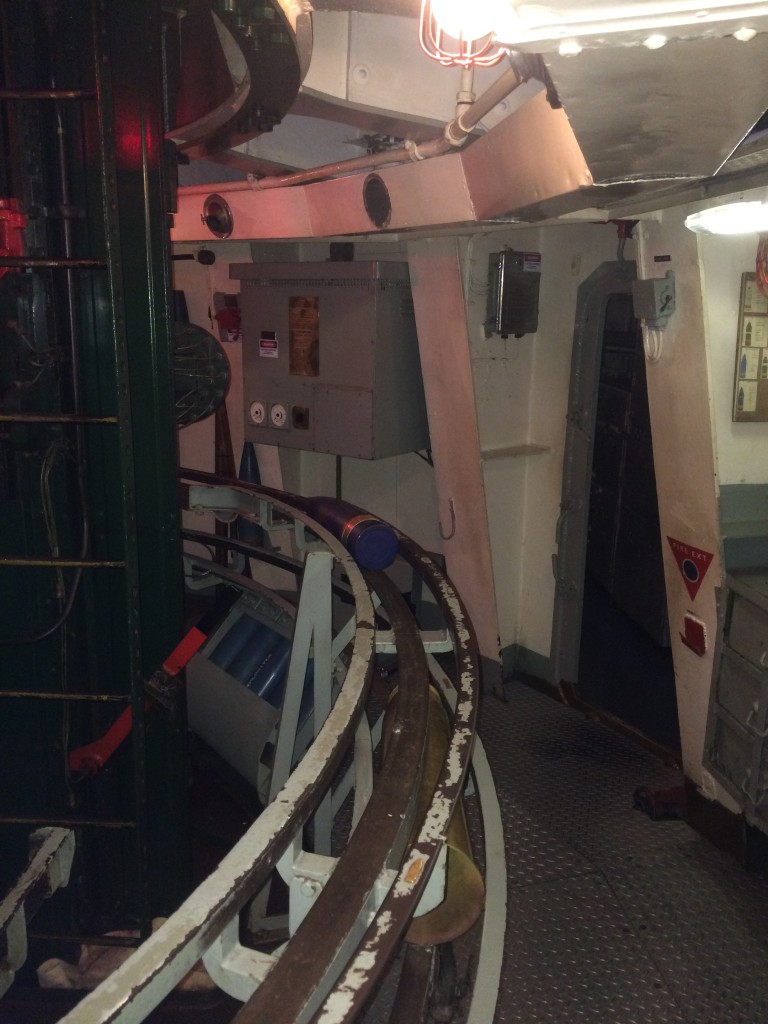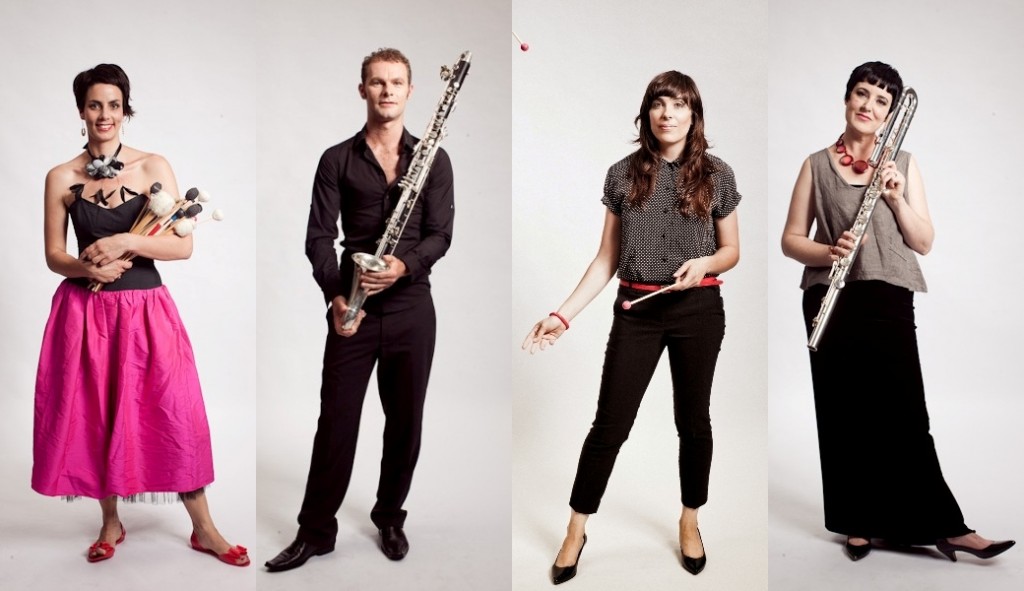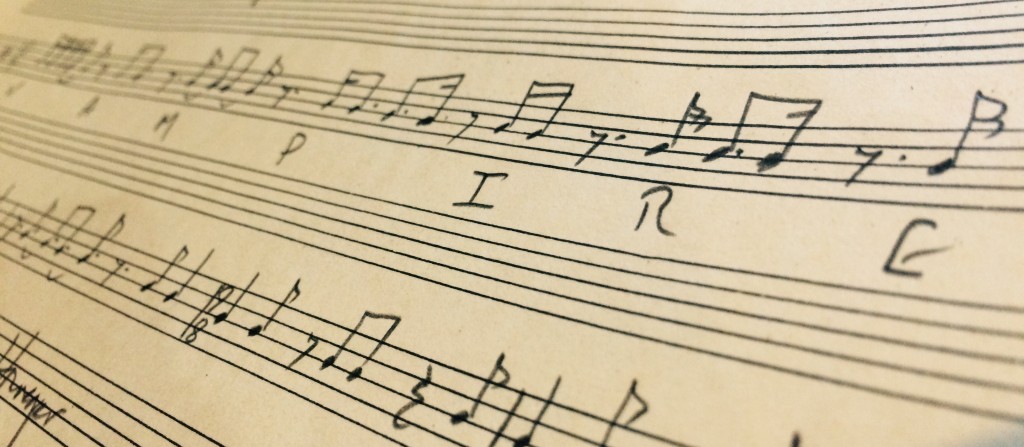How to perform in your own private Gun Bay
Just as crossing the line had to be made in my studio using samples from onboard HMAS Onslow, I’ve put together Gun Bay over the last few days. If the sampling was detailed in crossing, it wasn’t anything compared to this. As you may remember from this earlier post, the score itself includes floor diagrams and photographs of all of the objects that should be hit in concert. The sampler itself now includes several hundred sounds from the Gun Bay, and I’ve been able to trigger them with a variety of MIDI instruments including an Alesis drum pad to give a real “performed” sound.
This has literally given me the ability to play on any of those objects right here, in my studio, and to perfect the resulting recording. There are almost limitless ways it can be performed, since the score allows performers to put the sections together in any way they like, and I’m having fun choosing the order that I’ll present the ideas in the final, fairly short performance, for the CD version of Noise Husbandry.
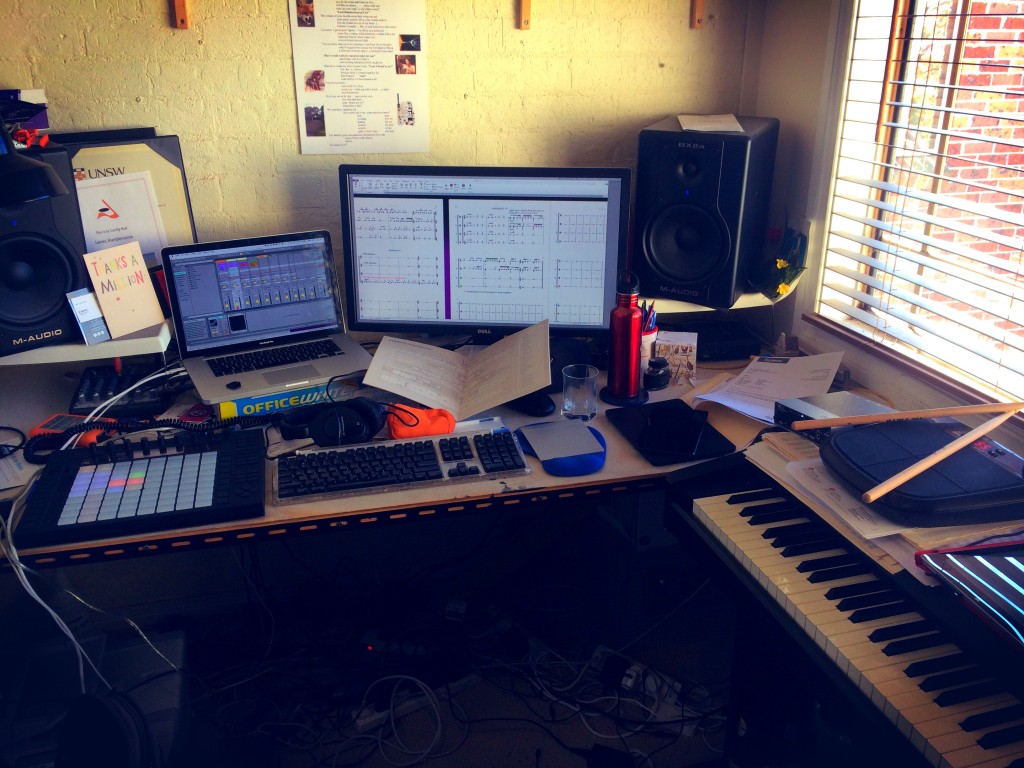
My studio with an electric piano, Alesis drum pad and Ableton Push set-up for recording realistic MIDI performances of “Gun Bay”
